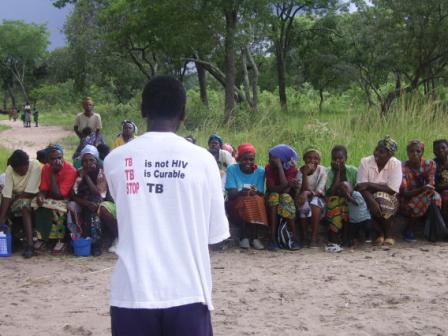It’s common for people affected by TB to suffer from discrimination – both in the UK and overseas – as a result of the stigma and myths that surround the illness.
Why is TB stigmatised?
 In some cultures, TB is associated with witchcraft. TB can be considered a ‘curse’ on a family, as the illness often affects multiple generations – we know that this is simply because TB is an airborne illness, which is more likely to be spread among people living in close proximity.
In some cultures, TB is associated with witchcraft. TB can be considered a ‘curse’ on a family, as the illness often affects multiple generations – we know that this is simply because TB is an airborne illness, which is more likely to be spread among people living in close proximity.
TB is often associated with factors that can themselves create stigma: HIV, poverty, drug and alcohol misuse, homelessness, a history of prison and refugee status.
People who are discriminated against may be isolated socially, particularly in small communities – even entire families may be shunned. Women are often blamed as the source of TB, and those affected by the illness may be divorced or considered unworthy of marriage.
The impact of stigma
Fear of discrimination can mean people with TB symptoms delay seeking help, making it much more likely that they will become seriously ill and infect others. This then perpetuates the myth that it is the TB treatment itself that causes deaths, as treatment is much less effective if left until the illness is in its advanced stages.
Stigma around TB can also make people reluctant to stick with their course of treatment – over the many months this takes – for fear of being ‘found out’. By taking treatment irregularly, people risk developing drug resistance.
Myth busting
TB is not spread through spitting or sharing crockery or cutlery. You need to be exposed to TB droplets in the air for a long period of time – typically eight hours or more – to be at risk of contracting the illness. This means the idea that TB is easily spread on public transport is also a myth.
